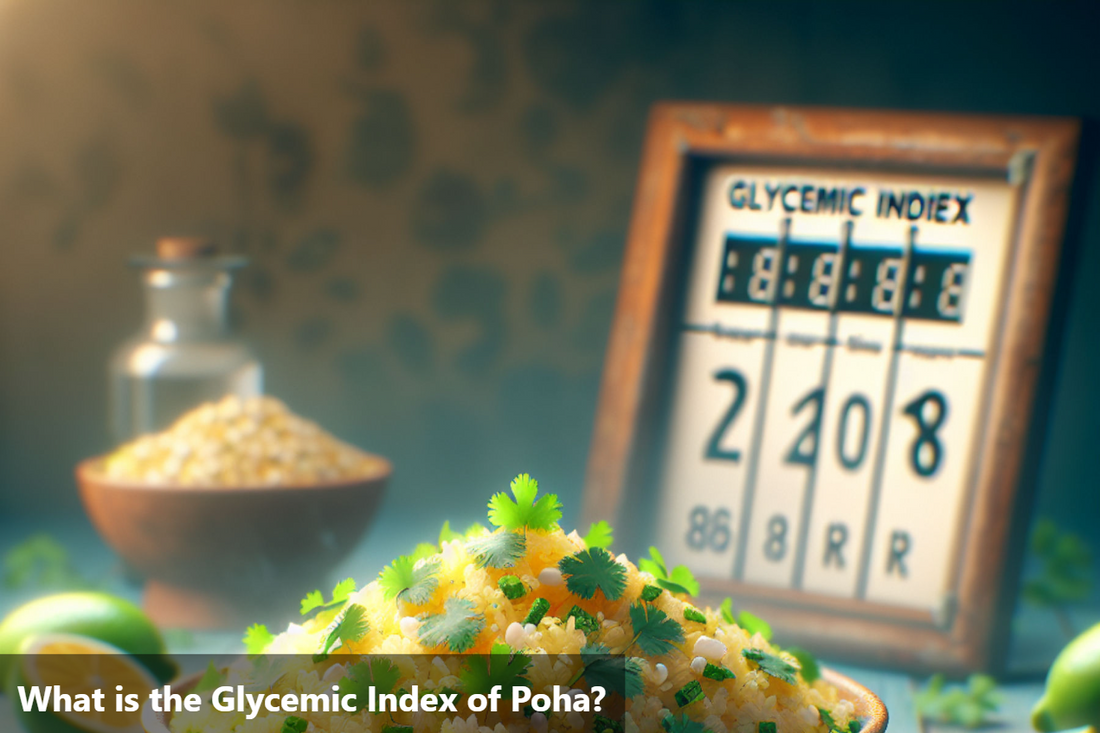The glycemic index (GI) is a ranking system that helps individuals with diabetes assess how different foods can affect their blood sugar levels. Understanding the GI of foods is crucial for managing diabetes effectively. By monitoring the GI values of foods consumed, individuals can make informed choices to keep their blood sugar levels stable throughout the day.
For individuals with diabetes, paying attention to the GI of foods like poha can make a significant difference in their overall blood glucose control. Poha, flattened rice, typically has a moderate to high glycemic index, ranging from 59 to 86. Poha, a flattened rice dish popular in Indian cuisine, can have varying GI values depending on factors like cooking method and additions like vegetables or spices. Incorporating low-GI foods like poha into meals can help prevent rapid spikes and drops in blood sugar levels.
What is Glycemic Index?
The glycemic index (GI) is a numerical ranking system that measures how quickly and how much a carbohydrate-containing food raises blood glucose (blood sugar) levels after consumption compared to pure glucose or white bread, which are assigned a value of 100. Foods with a high GI cause a rapid increase in blood sugar levels, while those with a low GI result in a slower, more gradual increase in blood sugar levels.
Here's how the glycemic index is typically classified:
Low GI (55 or less): These foods are digested and absorbed slowly, resulting in a gradual rise in blood sugar levels. Examples include most non-starchy vegetables, legumes, whole grains, nuts, and seeds.
Medium GI (56-69): Foods with a medium GI cause a moderate increase in blood sugar levels. Examples include some fruits, whole wheat products, and certain types of rice.
High GI (70 or above): These foods are rapidly digested and absorbed, leading to a quick spike in blood sugar levels. Examples include refined grains, sugary snacks, sweets, and processed foods.
Glycemic Index of Poha and its impact on Blood Sugar Levels
Poha is a popular breakfast option in India and other parts of Asia. Its glycemic index (GI) can vary depending on factors such as the thickness of the flakes and how it's prepared.
Generally, poha has a moderate to high glycemic index, typically ranging from 65 to 75 or higher. Foods with a GI of 55 or less are considered low GI, while those with a GI of 70 or above are considered high GI. Therefore, poha falls into the moderate to high GI category.
The impact of poha on blood sugar levels can vary from person to person and depends on several factors such as portion size, other foods consumed with it, individual metabolism, and overall diet. Consuming poha alone may cause a rapid increase in blood sugar levels, especially for individuals with diabetes or insulin resistance. However, factors such as cooking methods, ingredients added, and portion sizes can influence its glycemic impact.
Tips to Mitigate the Impact of Poha on Blood Sugar Levels:
Pair with Protein and Fiber: Combining poha with sources of protein and fiber can help slow down the absorption of sugar into the bloodstream. For example, you can add vegetables, nuts, seeds, or legumes to increase the fiber and protein content of your poha dish.
Control Portion Sizes: Be mindful of portion sizes to avoid excessive carbohydrate intake, which can lead to spikes in blood sugar levels. Opt for smaller serving sizes and balance poha with other nutrient-dense foods.
-
Choose Thick Flakes: Thicker varieties of poha tend to have a lower glycemic index compared to thinner flakes. Opting for thicker flakes may help reduce the glycemic impact of poha.
Include Healthy Fats: Adding healthy fats such as avocado, nuts, or seeds to your poha dish can further slow down the absorption of carbohydrates, helping to stabilize blood sugar levels.
Monitor Blood Sugar Levels: If you have diabetes or insulin resistance, it's essential to monitor your blood sugar levels regularly and observe how different foods, including poha, affect your levels. This can help you make informed decisions about portion sizes and meal compositions.
Cooking Methods: Opt for healthier cooking methods such as steaming, roasting, or stir-frying instead of deep-frying to reduce the overall calorie and fat content of the dish. Avoid adding excessive amounts of oil or ghee during the cooking process.
Bottomline
The glycemic index of poha is crucial for individuals with diabetes. Overall, while poha can be included in a diabetic diet, it's important to consume it in moderation, choose healthier cooking methods and ingredients, and monitor blood sugar levels to maintain optimal glycemic control. It is advisable to combine poha with other low glycemic index foods to create balanced meals that keep blood sugar levels steady throughout the day.
It's essential for individuals with diabetes to consult with a registered dietitian or healthcare provider to develop a personalized meal plan that takes into account their dietary preferences, health goals, and medical condition.
Say GOODBYE to restrictions on Rice during Diabetes. Introducing Low GI Rice from DiabeSmart - India's 1st Diabetes Foods Brand.
✅Helps Manage Blood Sugar Levels
✅Clinically Tested: GI < 55
✅Cooks & Tastes like Regular White Rice
✅Good For Whole Family
This Blog post is an initiative by DiabeSmart, to provide accurate and Nutritionist / Doctor approved information related to Diabetes. DiabeSmart is India's first Food brand designed specifically for Diabetics, that has been clinically tested on Diabetics and Pre-Diabetics to deliver 55% - 70% lower Sugar spikes. DiabeSmart is part of Lo! Foods - India's leading brand for Everyday Functional Health foods.















